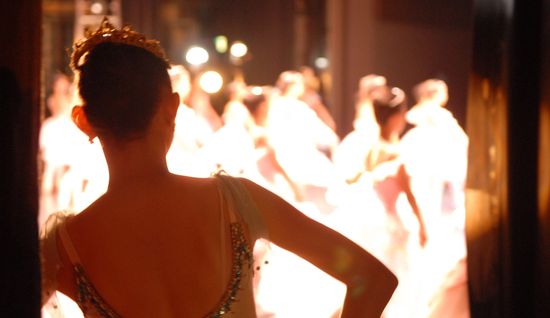Can the Liberal Arts Produce World-Class Scientists? This Campus Donor Thinks So
/
A few days ago, the financial services behemoth Wells Fargo apologized for advertisements that implied that teenagers should set aside their artistic dreams and choose careers in science.
As the New York Timesreported, the print ads, promoting a "teen financial education day" program, featured an image of a smiling young woman with the headline: "A ballerina yesterday. An engineer today." A number of prominent artists took to social media to complain and Wells Fargo promptly apologized. The company said it would change the advertising campaign.
This hullabaloo compels us to ask a question we've posed over and over again here at IP: Why do people view the arts and the sciences as mutually incompatible? Why must it be an either-or proposition? Can't you walk and chew gum at the same time?
Fortunately, some philanthropic players have the same idea, and we've been writing here and there about gifts by funders looking to bridge the divide between science and the humanities.
The latest example is news out of Bronxville, N.Y., where Sarah Lawrence College announced a $2 million gift from alumna Suzanne Salter Arkin of Manhattan to create the Suzanne Salter Arkin Science Endowment, dedicated to attracting outstanding science students who want to pursue serious individual study of science while engaging with the arts, humanities, language, literature, and the social sciences in a liberal arts institution.
The centerpiece of the endowed fund will be a new program providing stipend support for summer externships for selected undergraduate students who have excelled in the sciences and begun significant research on campus.
At first blush, you may be thinking, "Cool, another gift acknowledging how the liberal arts can bolster science education." And of course, that's true. Viewed through this lens the gift resembles, say, the Teagle Foundation's allocation of close to $400,000 over 36 months to five partner institutions that will build upon previous Teagle grants to integrate the liberal arts in engineering curricula or the logic undergirding the Mellon-supportedCenter for Art, Science and Technology at MIT.
Yet in those two examples, the liberal arts are being superimposed on a preexisting science framework. The Sarah Lawrence gift, on the other hand, flips the script.
The school is a legendary bastion of liberal arts education. Prior to this gift, it had a relatively small science footprint. And therein was genesis of Arkin's "Ah-ha" moment. Why not leverage its liberal arts excellence to build upon its rigorous science curriculum, which includes a 14-year old summer science research program?
"This gift is transformational for Sarah Lawrence," says Dean of the College Kanwal Singh. "While the college is well known for the arts and humanities, our pedagogy, which gives students research experience from day one, is also particularly well suited for the sciences." And so, much like the recently profiled Mellon-funded "Humanities Labs," the endowment aims to equip Sarah Lawrence students for post-college employment in science research and technical institutions.
Not surprisingly, there is some evidence that the humanities produce better scientists. Thomas R. Cech, a Nobel laureate in chemistry, notes in his paper Science at Liberal Arts Colleges: A Better Education? that a survey conducted over a two-year period by the National Academy of Sciences found that almost one in five scientists elected into the National Academy of Sciences received their undergraduate degree from a liberal arts college. Cech attributes the success of liberal arts science students to two features of a liberal arts education: the nurturing environment and the cross-training between science and the humanities.
Which brings us to Fareed Zakaria, the host of CNN’s "Fareed Zakaria’s GPS" and an editor-at-large at Time magazine, whose new book is called In Defense of a Liberal Education. The tropes will sound familiar. "The central virtue of a liberal education," he writes, "is that it teaches you how to write, and writing makes you think." He's preaching to the choir. This common line of defense argues that liberal arts proponents should welcome engineers, doctors, web developers, and other ones-and-zeros types to their fold. "Take a class in Greek mythology or French existentialism; it'll make you a better programmer" they argue.
This may very well be true, but news out of Bronxville suggests a more active approach. Blessed with a rich liberal arts infrastructure, the Suzanne Salter Arkin Science Endowment recruits STEM-inclined students on STEM-like terms. Will other small liberal arts institutions with a faint science footprint follow this approach?








